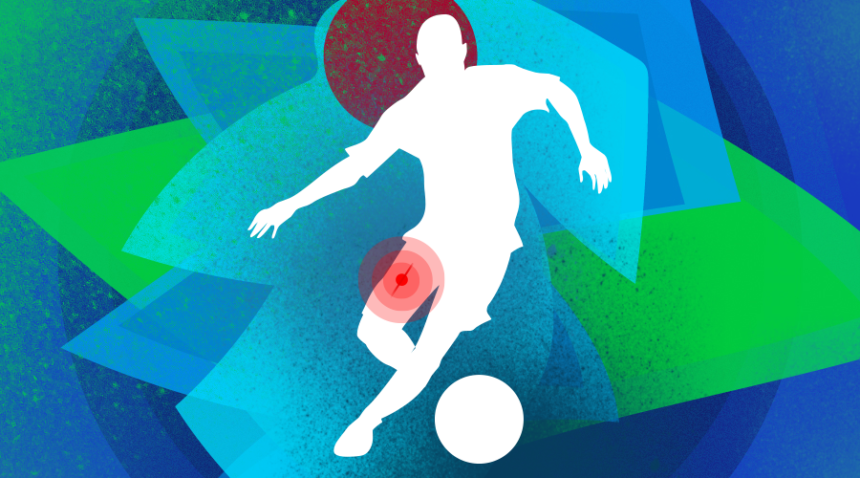From Serena Williams to Chris Bosh, it’s a big story when a famous athlete develops a blood clot. It seems almost counterintuitive that someone so fit and young would face this medical issue.
“Blood clots can be scary,” says Stephan Moll, MD, a hematologist and professor in the UNC School of Medicine. “But people hear ‘life-threatening blood clots,’ and this distorts the discussion. Blood clots are often not life-threatening and can be treated and dissolve.”
Dr. Moll explains how blood clots develop and unpacks common perceptions about how the condition affects athletes.
What Are Blood Clots?
A blood clot is a gel-like clump of blood. Clotting is a normal and essential process that can stop the body from losing too much blood, but when it clots too much or when clots don’t dissolve, it can block blood flow and become a serious health issue.
There are two major conditions related to blood clots. Deep vein thrombosis (DVT) is when the clot forms in one of the body’s major veins. DVT is most common in the legs but can also form in other parts of the body, including the arms and pelvis.
When the clot travels to the lungs, it becomes a pulmonary embolism (PE), a potentially dangerous condition that can prevent blood flow to the lungs. In fact, sudden death is the first symptom in about one-quarter of people who have a PE.
It’s for this reason health care professionals work hard to raise awareness of the symptoms and risks of blood clots, Dr. Moll says. But once diagnosed and treated, DVT and PE are usually not fatal.
Symptoms of a Blood Clot
Blood clots can be sneaky: There are often no flashing warning signs to tell you that you have one, and symptoms can easily be confused with other conditions, Dr. Moll says. If you experience any of the following symptoms, seek medical attention right away.
Symptoms of DVT include:
- Pain
- Swelling
- Skin discoloration, usually bluish or reddish coloring
- Warmth of the leg or arm
Symptoms of PE include:
- Shortness of breath
- Chest pain, especially when taking a deep breath in
- Unexplained cough or coughing up blood
- Unexplained rapid heart rate
Risk Factors of Blood Clots
Other than injury, blood clots can develop after long periods of immobility; surgery, especially in the pelvis, abdomen, hip or knee; trauma, such as a bone fracture; or when there is increased estrogen in the body because of pregnancy, birth control or hormone therapy.
If you’ve had a previous blood clot or have a clotting disorder, varicose veins or a family history of blood clots, you may be at a higher risk of blood clots. Other conditions such as heart failure, cancer, obesity and inflammatory disorders such as lupus or rheumatoid arthritis may also increase your risk.
Do Athletes Face Special Risks?
Because athletes are often young, in remarkably good shape and appear healthy, people often express shock when they read about a famous athlete experiencing a blood clot, Dr. Moll says.
But by the nature of sport, the physical contact athletes endure often puts them at greater risk for injury, which means their risk of blood clots increases, too.
Other risk factors that can increase an athlete’s risk of blood clots include:
- Wearing a cast or undergoing surgery as a result of injury
- Immobility caused by frequent and long travel times
- Unusual compression of veins from unusually large muscles or unusual anatomy
Dehydration is also often considered a risk factor, though Dr. Moll says its connection to blood clots has not been scientifically established.
Blood Clot Treatment
Athlete or not, if your doctor has identified a blood clot, the first step is to start a blood thinner, called an anticoagulant, to prevent the clot from getting bigger. Blood thinners are typically continued for at least three months and sometimes for years, depending on what caused the blood clot.
The location, size and threat to overall health will determine whether you need other treatments. For life-threatening clots, your doctor may recommend thrombolytics, also referred to as “clot busters,” a type of medication that will help dissolve the blockage. Extensive clots can also be sucked out through catheters that are inserted into the veins during a procedure called a mechanical thrombectomy.
But for athletes, treatment can get a bit trickier. In the past, doctors traditionally forbade athletes from engaging in contact sports because blood thinners increase the risk of bleeding. With trauma common on the field, players have a higher chance of excessive bleeding and often a harder time stopping it.
Today, doctors treating athletes can take a more nuanced approach, customizing treatment based on many factors, including the risk of injury, Dr. Moll says. Intermittent dosing, for example, is a possible strategy where, after three months of uninterrupted therapy, athletes at risk of injury can have a minimal amount of blood thinner medication in their systems on the day they play. Then, therapy is promptly restarted after the game as long as no major trauma occurred on the field.
Dr. Moll says treatment is often an issue of how much risk the athlete is willing to take in order to keep playing and what resources a player or team has to make intermittent dosing feasible and safe.
“Mindsets are changing,” he says. “The risk of developing a new blood clot with intermittent dosing—under the right circumstances—is quite low.”
Remember, you don’t need to be a world-class athlete to be on the lookout for signs of a blood clot. If you experience any symptoms that could point to a blood clot, talk to your doctor.
Concerned about blood clots? Find a hematology specialist near you.

